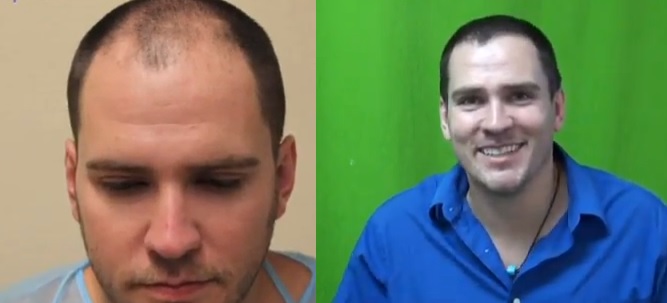Beyond the simple idea of extracting and transferring hair grafts, it is good for patients to broaden their level of understanding. This would include the measures needed for detailed results. Such knowledge can help when speaking to different physicians during the initial consultation phase.
Creating the Hairline and Temples
Not only does the hairline and temples need to be shaped and positioned properly, it is also important for them to have a natural looking appearance.
The very outer edge is soft and feathery. It is referred to as the micro hairline and consists of the initial few millimeters of hair which borders the face. Doctors often choose thinner hair from the nape or behind the ears to achieve this effect. These types of grafts consist of a single hair follicle.
The next component is known as the macro hairline. These hairs are thicker. And the grafts used consist of more than one hair shaft. This needs to be created as a natural progression. Therefore, behind the single follicle grafts, doubles and triples are used. And beyond this, it is possible to insert quadruples to create a thicker fullness, particularly across more general areas of the head.
Follicular Unit Extraction Versus Strip Surgery
Again, follicular units are used as grafts in both FUE and strip procedures. However, one of the main advantages to FUE hair transplant is the ability to extract a much wider range of different graft types.
This is because punches can be applied anywhere across the head. Therefore, doctors can choose single follicular units, doubles, triples, quadruples etc. to create a natural looking progression.
But strip excisions can only be performed on the lower regions of the back or sides.
Advanced FUE Hair Restoration and Follicular Unit Grafts
Ideally, donor grafts are harvested entirely from the patient’s scalp. However, this is not always possible for every situation. Some patients may have fewer available grafts if most of their follicles have already been miniaturized. Others may have exhausted their head donor supply through past procedures.
If a large number of donor grafts are needed on patients who are not able to meet these requirements through the follicles available on their scalp, the use of body hair may be something to consider.
Hair that grows on the body emerges from single follicular units, as opposed to clusters. Fullness and density can be achieved through sheer volume. Also curliness is another factor that can contribute to the appearance of abundant coverage. Therefore fewer grafts can be used per square centimeter.
A doctor may also choose to create insertion slits of a sharper angle. This causes the hair to lie practically flat against the skin’s surface. And cumulatively, this also helps create the appearance of greater coverage.. However, the decision to use this strategy will differ, depending on the nature of the patient’s case.

